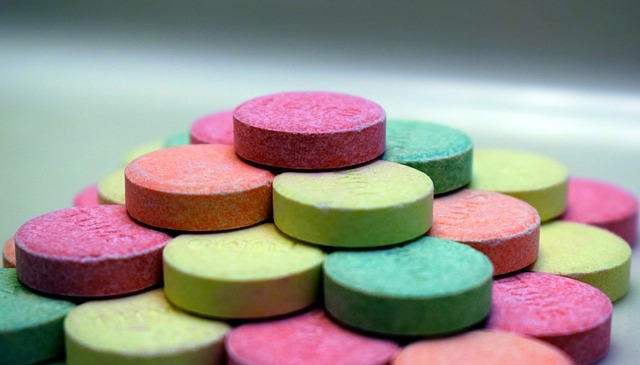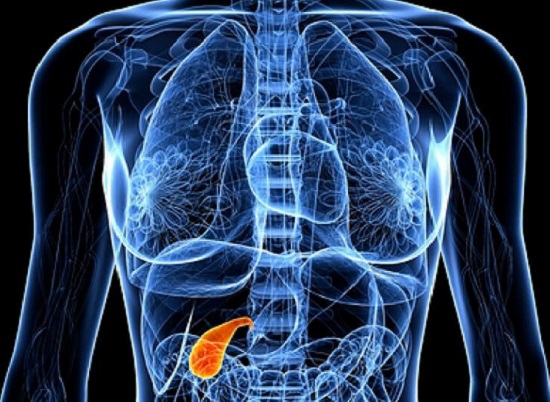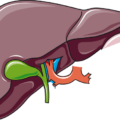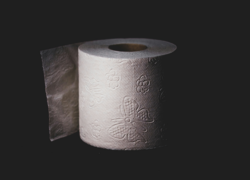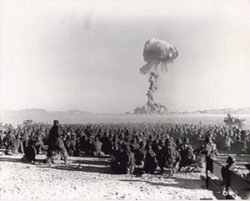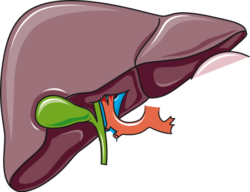Stomach acid is a necessary and vital part of digestion. Yet, stomach acid has become enemy number one in the United States. We are a nation reliant on our proton pump inhibitors (PPI), acid reducers and antacids. Many think they cannot live without these medications but many of the symptoms of low stomach acid actually mimic those of excessive acid or Gastroesophageal Reflux Disease (GERD). A very common misunderstanding is if you have GERD/acid reflux, you have too much stomach acid. Quite the opposite is true. Low stomach acid will cause the lower esophageal sphincter to remain open, causing stomach acid and contents to reflux into the esophagus.
Jonathan Wright, MD of the Tahoma Clinic in Washington state and author of Why Stomach Acid is Good For You has conducted 25 years of stomach acid testing on a variety of test subjects. Time and again patients suffering from heartburn and GERD almost always had low, not high, stomach acid. He found very few people with excess stomach acid and was found only in a few rare conditions like Zollinger-Ellison syndrome. GERD was hardly ever associated with too much stomach acid.
Though the most common treatment for GERD is a prescription for some sort of acid-reducing medication, it is well accepted in the literature that GERD is caused by an increase in intra-abdominal pressure (IAP). Acid reflux occurs when pressure causes stomach bloat, pushing stomach contents, including acid, through the LES into the esophagus. What may cause this, besides low stomach acid, is overeating, obesity, bending over after eating, lying down after eating, and consuming spicy or fatty foods.
9 Reasons Why Stomach Acid is Important
- Kills harmful bacteria and viruses. We pick up viruses and bacteria from our hands, utensils, food, beverages, kissing, etc. Our stomach acts as a gatekeeper for a healthy immune system when our stomach acid kills these buggers. Unlike every other part of our body, a healthy stomach is sterile because the acidic pH kills foreign invaders. Many infections, like c diff and h pylori, can be the result of low stomach acid.
- Prevents small intestinal bacterial overgrowth (SIBO). Stomach acid that makes it to the duodenum (the first part of the small intestine) will help combat bacteria that has transiently found itself in the small intestine, either from the large intestine or the stomach. Bacteria does not belong in the top portion of the small intestine and an overgrowth can cause horrible symptoms.
- Activates the digestive enzymes, pepsin, necessary for digesting protein. Without it you may end up with amino acid deficiencies.
- Signals the pancreas to release the enzymes amylase, protease, and lipase. These enzymes are critical to break down proteins, fats, and carbohydrates. Carbohydrate malabsorption can cause excessive gas and contribute to SIBO.
- Triggers motility in the small intestine. Small intestine motility is needed to move food along. Slow motility of the small intestine can contribute to SIBO and cause pain.
- Is crucial for the absorption of micronutrients. Calcium, magnesium, iron, folate and vitamin B12 depend upon stomach acid for proper absorption. Stomach acid is essential for the breakdown and absorption of these nutrients. Low stomach acid has been linked to iron anemia, b12 pernicious anemia, osteoporosis, and magnesium deficiency.
- Reduces food to small particles for easier digestion in the small intestines. When food is not chewed properly or broken down by stomach acid, large particles have been linked to leaky gut syndrome and even celiac disease.
- Can prevent gastroparesis (slow gut motility). Stomach acid “turns on” the lower pyloric valve to release food into the small intestine. Low stomach acid will cause food to stay in the stomach longer.
- Triggers sphincter of Oddi motility. The sphincter of Oddi is a muscular valve area between the duodenum and the biliary and panacreatic ducts. It is the gatekeeper for the flow of bile and pancreatic enzymes. Studies have shown stomach acid triggers this sphincter to open and close properly. Low stomach acid may very well contribute to a painful disorder called sphincter of Oddi dysfunction (SOD).
Even though all of this is true, doctors rush to overprescribe drugs to reduce stomach acid. I blame the pharmaceutical industry. Doctors these days are putting way too much trust in what their drug reps are selling them instead of facts from a functional medicine/whole body approach. Worse is drug reps will only tell one side of the story, rarely rattling off the numerous and potentially life threatening side effects. Keep in mind the “cure” for low stomach acid is not found on a prescription pad.
Before I was diagnosed with SOD and chronic pancreatitis, it seemed every time I went to a gastroenterologist they would prescribe an acid reducing drug, though there was no proof my problem was from excessive stomach acid. Low stomach acid is rarely tested by gastroenterologists, certainly none of mine offered such testing. The SOD caused me to alternate with excessive bile and a shortage of bile. I also would get bile reflux into the stomach. Bile acid is actually more neutral in ph than acidic. Therefore, bile will neutralize stomach acid. I always felt worse when I’d take an acid reducer so one day I read about low stomach acid and started on a regimen to increase my stomach acid. The results have been miraculous. I feel better, have gained back much-needed weight and muscle, and bloodwork for nutrients has improved.
Three Types of Acid-Reducing Medications
Not all antacids are the same. Here is a breakdown of the three types of antacids:
- Proton pump inhibitors (PPIs) are medicines that work by reducing the amount of stomach acid made by glands in the lining of your stomach. Examples: Omeprazole (Prilosec and Zegerid), Esomeprazole (Nexium), Lansoprazole (Prevacid), Rabeprazole (AcipHex), Pantoprazole (Protonix), and Dexlansoprazole (Dexilant).
- H2 blockers are medicines that work by reducing the amount of stomach acid secreted by glands in the lining of your stomach. Examples: Famotidine (Pepcid), Cimetidine (Tagamet), Ranitidine (Zantac), and Nizatidine (Axid).
- Antacids are agents that neutralize the gastric acid and raise the gastric pH. Examples: sodium bicarbonate, calcium bicarbonate, aluminum hydroxide, magnesium hydroxide, and Sucralfate (Carafate).
Dangers of Acid-Reducing Medications
PPIs are by far getting the worst press lately. Studies show PPIs have been linked to many chronic and deadly health conditions, including: dementia and Alzheimer’s disease, increased heart attack risk, increased pneumonia risk, weakening of the immune system, weight gain, and the hundreds of ailments linked to the reduction of the absorption of important nutrients, vitamins and minerals. Just one of these pills is capable of reducing stomach acid secretion by 90 to 95 percent. Taking high and frequent doses of PPIs, which most doctors recommend, causes a state of achlorydia (no stomach acid). Chronic use of PPIs has been shown to decrease extracellular concentration of adenosine, resulting in an increase in inflammation in the digestive tract which can exacerbate Crohn’s disease and ulcerative colitis.
It isn’t just PPIs that cause health problems, any of the other drugs reducing stomach acid are suspect. Many people who take antacids not only suffer from more chronic health problems than the average person, but they never actually cure their acid reflux in the process. Without making the proper dietary changes necessary to balance stomach acid, those who take antacids consistently, and for long periods of time, will progressively become more and more unhealthy. In particular, stomach acid can cause atrophic gastritis which can lead to serious disorders like stomach cancer.
Stopping the Vicious Cycle of Low Stomach Acid
Relying on acid-reducing medication causes a vicious cycle of constantly needing to neutralize symptoms, which in turn creates a low stomach acid environment, which in turn causes the LES to stay open and pyloric valve to spasm shut. This equates to more and more reflux and more and more antacids. The best thing to do is stop the cycle!
First: Get Proper Testing
The gold standard medical test for low stomach acid is the Heidelberg Stomach Acid Test. You will have to swallow a radio transmitter in the form of a pill. Then you will drink a solution of sodium bicarbonate (baking soda). The transmitter will record the ph levels of your stomach as long as it stays in your stomach. At the end of the test, a graph will show your response to the baking soda solution. In my opinion, this test should be the first test conducted before an endoscopy or prescribing an acid-reducing medication. An endoscopy does not accurately gauge stomach acid ph but many doctors prescribe medications to lower stomach acid based on physiological findings that may or may not be due to excessive stomach acid—most cases not!
There are two at-home tests for stomach acid. The first is the Baking Soda test. Mix 1/4 teaspoon of baking soda in a small cup of cold water first thing in the morning before eating or drinking anything.
After drinking the solution, time how long it takes you to belch. If your stomach is producing adequate amounts of stomach acid you’ll likely belch within two to three minutes. Early and repeated burping may be due to excessive stomach acid unless it is the light burps from swallowing a little air. Any belching after 3 minutes indicates a low acid level. This test isn’t foolproof but may be a good indicator to ask for the Heidelberg test or to try the second at-home test.
The second at-home test is the Betaine HCL test. Buy some Betaine HCL with pepsin (I like Country Life brand). Eat a high protein meal of at least 6 ounces of meat or meat alternative (this is very important or the test will not be accurate). In the middle of the meal take 1 Betaine HCL pill. Finish your meal as normal and pay attention to your body. Either you won’t notice anything, which means you likely have low stomach acid levels. Alternatively, you may at some point within the next hour or two feel some stomach distress like heaviness, burning, or hotness. These are signs you likely have enough stomach acid. If you do get some burning, don’t worry as it will pass in about an hour. You can also mix up a ½ teaspoon of baking soda and drink it to help stop the discomfort. Do NOT do this test if you take NSAIDs or Corticosteroids as they increase the chances of stomach ulcers when taken with betaine hcl. Consult a physician before trying this test or supplementing with anything. Obviously this test, like the baking soda test, is not foolproof so I recommend repeating the test a few times.
Second: Consider Treating Naturally
The only time I had heartburn was when I was pregnant. It was terribly painful and I thanked God every minute for acid reducers. I don’t know what I would have done without them. Honestly, I needed that medication periodically during that time in my life. However, I haven’t needed them any other time. That being said, I am NOT advocating for anyone reading this to go off their meds. Always discuss medication changes with your doctors. My experience was that mainstream doctors were close-minded to the discussion of low stomach acid or of natural remedies. I got more help from a naturopath and functional medicine practitioner. I suggest seeking a consult with one of these practitioners but do try to discuss your concerns with your doctors.
There are several ways to go about treating low stomach acid. They are all easy and cheap.
- My therapy of choice is taking one 600 mg. Betaine HCL with pepsin pill with every protein meal. Some people need more but I seem to do ok with just one. You will know when you reached your threshold when the amount of pills causes some burning.
- Drink an apple cider vinegar (ACV) solution of 1 or 2 teaspoons of ACV with a small glass of water with each meal. Alternatively, you could drink some pickle juice or kombucha tea—a fermented probiotic drink.
- Consume a small amount of bitters with each meal. Bitters send a signal to your stomach to produce acid.
- Develop better food hygiene. Eat a healthy, whole foods, clean diet. Don’t overeat. Just because the restaurant gives you a huge plate of food doesn’t mean you have to eat it all. Save some leftovers. Chew food thoroughly. Some say to chew 32 times and count as you chew to make sure you are doing it.
- Avoid lying down after eating and relax upright.
- Don’t bend over after eating.
- Purchase a bed wedge. I found mine on Amazon and it has an elevation of 12”. You can find all different shapes and sizes. I recommend buying one with a washable cover.
Begin balancing your stomach’s acidity level will take time but will pay off with optimal wellness in the end!
We Need Your Help
Hormones Matter needs funding now. Our research funding was cut recently and because of our commitment to independent health research and journalism unbiased by commercial interests we allow minimal advertising on the site. That means all funding must come from you, our readers. Don’t let Hormones Matter die.
Yes, I’d like to support Hormones Matter.
Sources
Benson, J. (2012) Avoid the dangers of proton pump inhibitors (PPIs) and treat your acid reflux naturally. Natural News. http://www.naturalnews.com/036336_PPIs_acid_reflux_side_effects.html
Carstensen, M. (May 11, 2016). The Link between Heartburn Drugs and Dementia. New York Post. http://nypost.com/2016/05/11/the-link-between-heartburn-drugs-and-dementia/
Huaqing Ye, J. and Rajendran, V. Adenosine (2009). An immune modulator of inflammatory bowel diseases. World Journal of Gastroenterology. 15(36): 4491–4498. http://www.ncbi.nlm.nih.gov/pmc/articles/PMC2751993/?tool=pubmed
Johnson, D. and Oldfield, E. (2013). Reported Side Effects and Complications of Long-term Proton Pump Inhibitor Use. Clinical Gastroenterology Hepatology.11(5):458-464. http://www.medscape.com/viewarticle/804146.
Wright, S. 3 Tests for Low Stomach Acid. SCD Lifestyle Website. http://scdlifestyle.com/2012/03/3-tests-for-low-stomach-acid/
This article is for informational purposes only. It is not intended to diagnose, treat, cure, or prevent any disease. Please discuss all medication issues with your physician.
Image by Brett Hondow from Pixabay.
This article was published originally on Hormones Matter on May 17, 2016.
